Quicklinks
Quicklinks
Nearly 22 years ago now, HHLA Container Terminal Altenwerder (CTA) was launched and it has gone on to become the most highly automated handling facility in the Port of Hamburg. In order to maintain and repair the equipment, 150 employees work in a shift system at the Altenwerder site for HHLA Technik. Highly specialised technicians are needed in the troubleshooting and maintenance team, in two workshops for 95 automated guided vehicles (AGVs) and approximately 100 spreaders (load-carrying equipment for containers), as well as in specialist teams for various pieces of equipment. In total at the Hamburg sites – CTA, Container Terminal Burchardkai (CTB) and Container Terminal Tollerort (CTT) – there are nearly 500 people closely working together for HHLA Technik.

The steady progress of automation requires new expertise. With regard to the AGV fleet, which is to be completely converted to lithium-ion batteries by the end of 2023, Operations Manager Henning Verstege says: “Tradespeople with basic qualifications as electronics technicians or mechatronics engineers have all undergone training in high-voltage applications in order to be able to work safely and precisely with the new technologies.”
We use three examples to show exactly what this means for employees and their jobs, and how they deal with change.
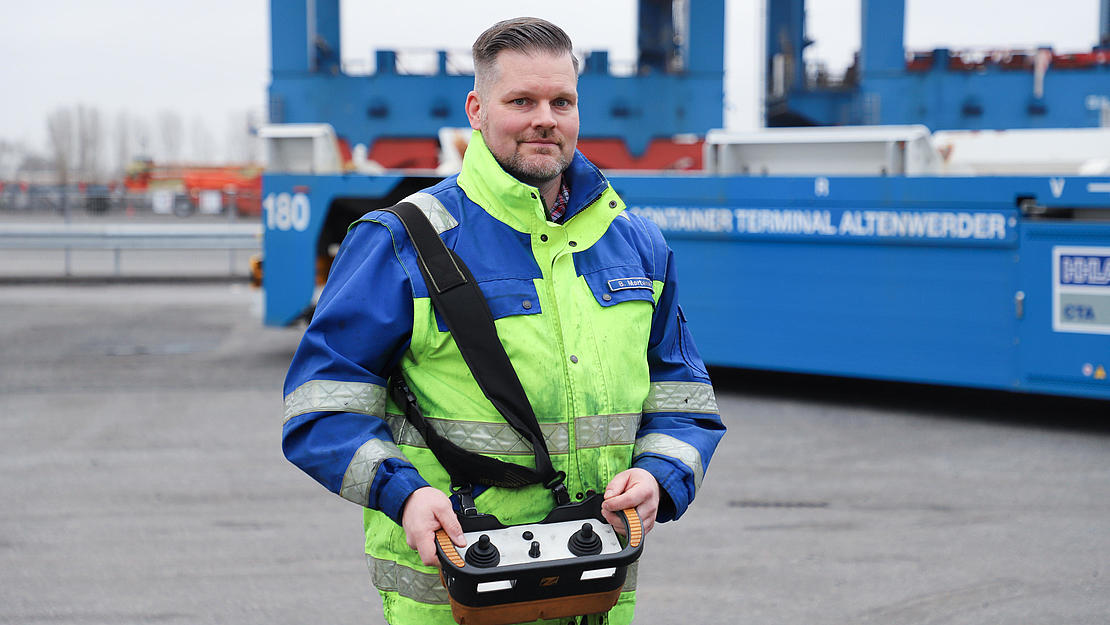
One of them is Bernhard Martens, deputy foreman in the AGV workshop. He has just parked a nearly 27-tonne AGV by remote control as easily as if it were a toy. This obviously brings him great joy, just like the interplay of technologies in the port, which he finds “super interesting”. That was why he left his job at a car dealership in 2007 and applied to work at the quayside. Since then, he has completed various training courses with HHLA.
While the first AGVs ran on diesel hydraulic systems, the second generation were diesel-electric, and these are now being replaced by battery-powered versions. For the first transition, Martens needed to complete further training as a qualified electrician for specific tasks. The three-week course enables him to complete specific processes independently, such as conducting measurements or adjustments, or changing a component, in settings with up to 1,000 volts. As a result of the new generation of AGVs which run on batteries with 800 volt DC, there was a three-day course in high-voltage applications. “In the technical trades, you need to keep learning all the time – that’s because the technologies used in vehicles change every 15 to 20 years,” he says. Safety training, system training and other training for smaller components is conducted more frequently.
As the deputy foreman, he has been responsible for a team of seven at the workshop since March 2011. Everything looks clean and tidy here – even the grease gun for lubricating joints – ready to integrate new components. Martens stands next to a column lift, which is capable of lifting AGVs up to working height, and above this an overhead crane hangs from the ceiling. He has a look to see what his colleagues are up to and then starts connecting up the cables inside the open AGV himself. After this, he uses the computer for AGV test drives and orders some replacement parts. The fact that a colleague is using an impact screwdriver to unbolt the cabin on a tractor unit above him at deafening volume so that he can repair the motor doesn’t faze him one bit.

In between, Martens phones the terminal control station and tracks AGV malfunctions online before picking up the driverless transportation system on the test track, repairing it and putting it back into operation. This is where he sees the advantages of digitalisation: “The programme ensures the machine operates under an even load, which makes for longer maintenance intervals.”
Martens enjoys looking for ways to optimise the highly specialised equipment and he is proud to be the one to keep AGVs and tractor units running: “I love being able to see what I have done when I clock off in the evening and that it’s not just the same thing, day in, day out.” For him, the challenge is “to set priorities in order to keep the fleet operational”.
In addition to all of this, the father of two also finds time to serve on the Works Council and on bargaining committees: “I like to help protect my colleagues’ rights,” he says.

Safety is also the top priority for Sascha Ehrich, a tradesman working in the quayside equipment team. Because his workplace is around 50 metres up in the air, he wears personal protective equipment and receives regular safety briefings. From the jib of each of the 14 container gantry cranes, he can see the Hamburg TV tower in good weather.
When Ehrich walks down the steel gangways, it looks like the inside of a ship. Claustrophobia is not an option, particularly if he has to climb the ladder through the narrow pylon that rises vertically for up to 80 metres. “Sometimes it’s just once every six months, but sometimes it’s twice a week,” he reports. For safety, he always has one of his eight colleagues from the quayside equipment team with him.
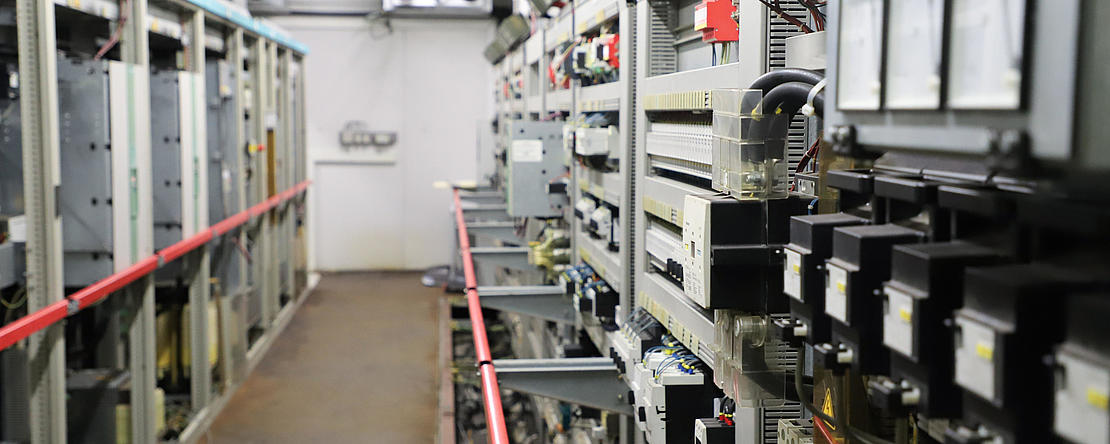
Usually, he passes a red door emblazoned with the sign “No entry! High voltage, danger to life”, behind which 10,000 volts are converted into 500 volts for operational use. In all weathers, Ehrich climbs the safety stairs with their non-slip steel grating steps, which lead to the electrical operations room – the “brain” of the container gantry crane. The control room houses the server and monitors, which display status or error messages.
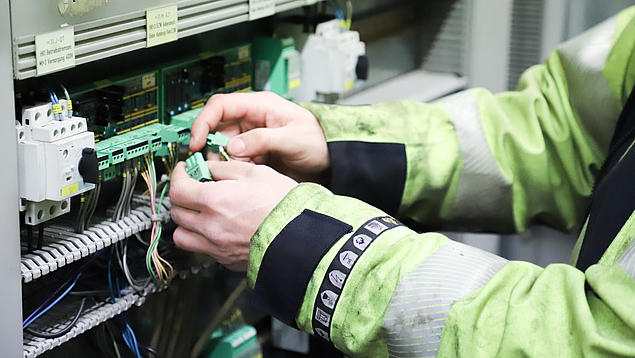
After receiving his technical diploma, the qualified construction engineer added a qualification as a mechatronics engineer from HHLA Technik to his skills. If there is an issue with an impulse transmitter or the bearings in a measuring are damaged, he grabs his spanner and replaces the parts. In his highly specialised field, he often focuses on mechanical tasks and increasingly on electrical ones, too. To do this, he receives further training, for example, in converter technology. “This is all about power electronics, how motors based on different technologies can be controlled – hoists with DC and crane trolleys with AC.” In several one-week courses, Siemens taught him how to operate their software.
His next learning experience is coming up in October 2024, when the container gantry cranes, which are over 20 years old now, will be gradually replaced by remote-controlled Liebherr cranes. “This will be a new challenge for us tradespeople because programming languages are completely different from what we know,” says Ehrich. In future, sensors and scanners will monitor everything that previously a crane operator had done: “It needs to be maintained, serviced and calibrated.” At the same time, alongside his everyday work, he also supports external companies that need to adjust crane trolley tracks or do some welding.
Before Ehrich started at HHLA Technik in 2004, he had never really used computers before. His professional development has accompanied computers from their earliest days to the retrofitting stage.
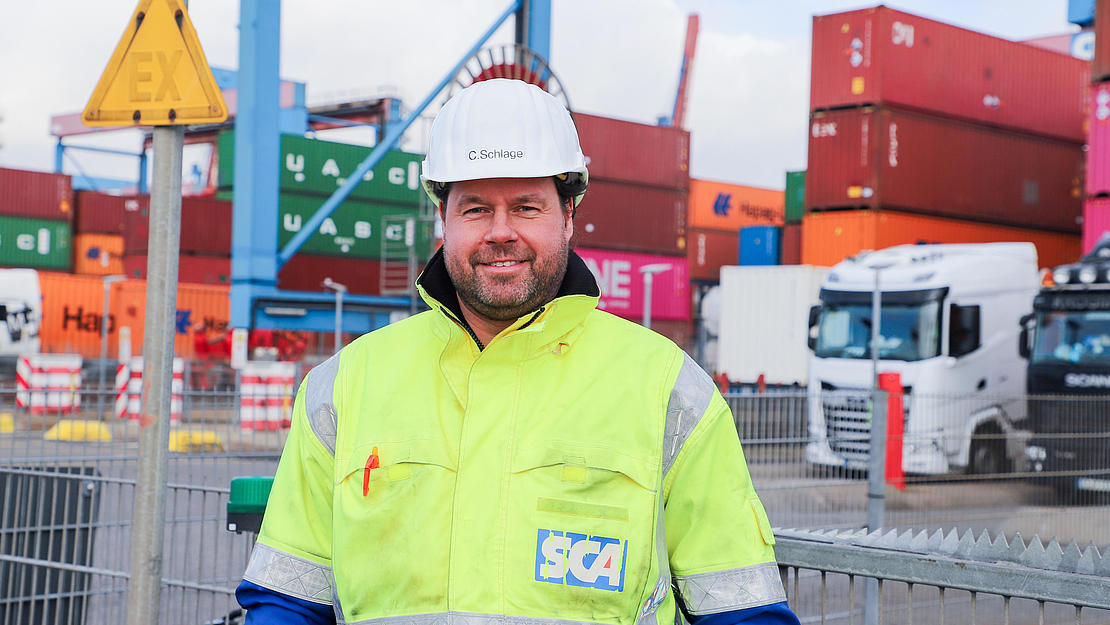
Electrical retrofitting is one of the specialist areas of Christopher Schlage, who heads the onshore equipment team as a dispatcher. Retrofitting involves extending the lifecycle of automated storage crane systems, also known as block storage. The eight tradespeople, plus one of Schlage’s representatives, work on this as part of the HHLA sustainability strategy. They make recommendations as to which components should be kept or replaced, support crane manufacturers when it comes to technical issues, or check the new crane documentation for correctness.
“As a result of the stacking precision we have achieved, we want to keep the floor markings that the crane uses as a guide,” the 47-year-old says. The 26 storage blocks with two rail-mounted gantry cranes and a capacity of 1,440 TEU per standard block act as a link between the AGVs on the quayside, heavy goods vehicles in the hinterland and the chassis handling at the terminal itself between the storage cranes and rail gantry cranes.
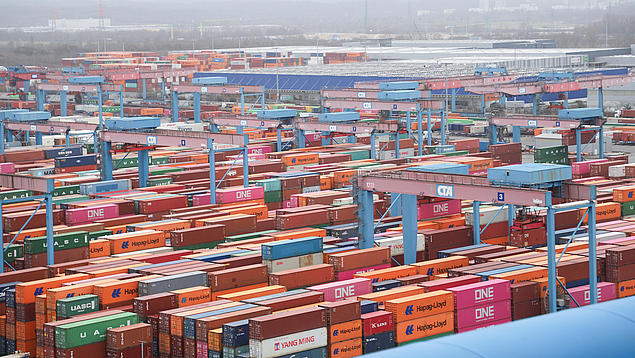
In the retrofitting project, the first storage block has already had its electronics stripped, while the steel constructions, motors, cabling and wheels have remained in place. The ageing power electronics set-up is no longer available on the market. “The crane’s central nervous system and everything that helps control the machine is being replaced. This includes the peripheral parts, such as input and output modules,” Schlage explains. And he emphasises: “We enjoy a very high reputation with the manufacturer ABB when it comes to maintenance, crane improvements and innovation.” His team developed details that the automation technology group has now adopted worldwide, for example, a positioning system using static magnets.
“I’ve always had a passion for storage cranes,” Schlage says. He came to HHLA Technik from an industrial company in 2001, first starting at CTA as a tradesman before becoming deputy foreman in the repairs department. Today, he spends about one fifth of his working day in the block storage but usually he can be found in the open-plan office. In the morning, Schlage first reads the logs from the late shift in order to be able to assign the relevant tasks to his team.
The computer workstations may seem unspectacular at first glance but it is here that major steps are being taken towards the sustainable future of HHLA: “Our analyses enable our existing materials to work more effectively.” By doing so, the crane specialists have been able to increase equipment stability in the block storage over the past two decades. One example he mentions are the power units for the cable drums: “With software updates we developed ourselves for cable drum control, we have achieved significant optimisations within our systems.”
Schlage has been able to form his own teams since 2006 but “there are no more crane technicians on the market,” he says. The real art to it is finding the right personalities among the electricians, electronics technicians and foremen. During the Lehman crisis of 2008, the employer gave him the opportunity to take a four-month training course to qualify as a technical manager. Today, he benefits from this entrepreneurial spirit when he monitors production processes, decides on the use of technical equipment and operational readiness.
Working at the first terminal in the world to be certified as climate-neutral is something he is very proud of because he and his team contributed to this accolade, for example, by converting it to energy-efficient LED technology. Previously, the 52 gantry cranes at CTA were fully illuminated in the evenings as they moved around – now the block storage remains dark. Only if a remote control operator is requested do the lights go on.
The qualified industrial electronics technician also likes to repair things in his leisure time – anything that is broken at home.
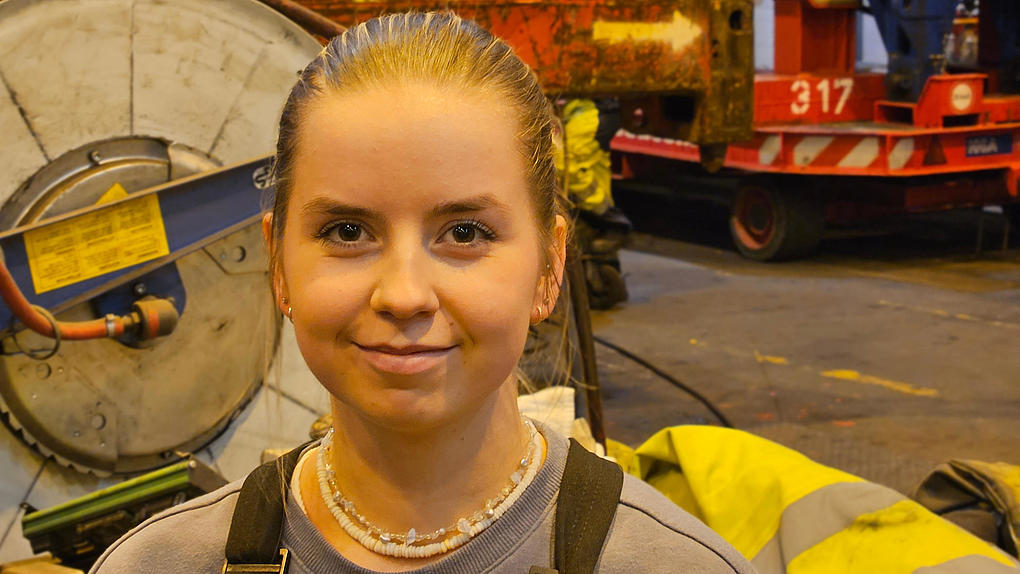
Kim Buchholz, trainee mechatronics engineer at HHLA Technik
Learn more